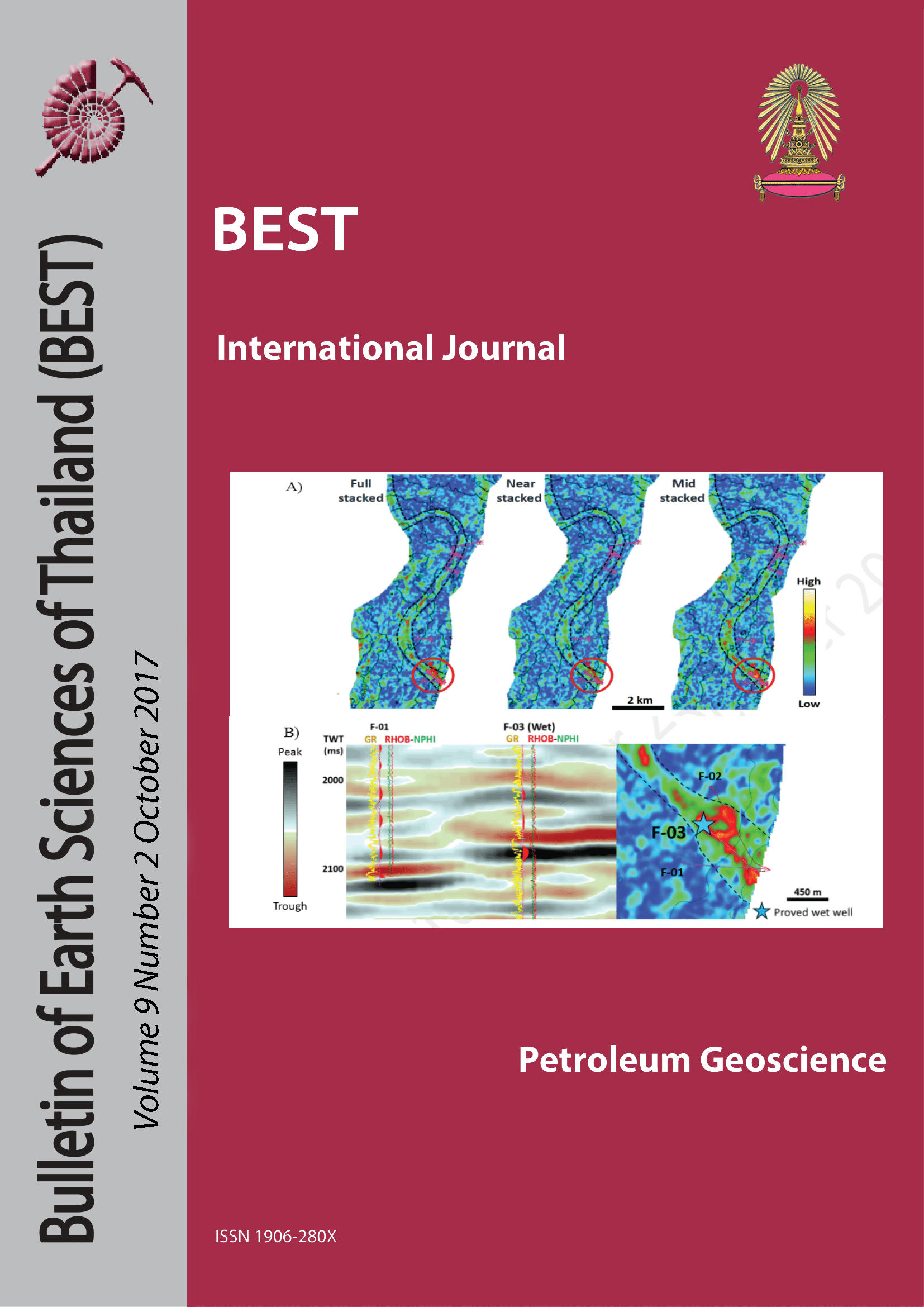RESERVOIR CHARACTERIZATION AND DEPOSITIONAL ENVIRONMENTS OF DEEPWATER SEDIMENTS IN THE LOWER CRETACEOUS SUCCESSION, OFFSHORE ROVUMABASIN, MOZAMBIQUE
Main Article Content
Abstract
The Passive Margin in the Offshore Rovuma basin, northern Mozambique is the Study area location. The depositional Settings of Rovuma basin consists of syn-rift Triassic- Jurassic (200-145Ma) and post-rift Cretaceous-Neogene (145-2.6Ma) sedimentary deposits including the Sand facies of the Rovuma Delta complex, Key et al., (2008). This Research Project was designed to investigate an area around the Cachalote-1 well location in two major topics as follows: (1) Reservoir Characterization and (2) Depositional Environments to outline Depositional Processes and types of Reservoir shapes, geometries and poroperm prediction based on the Caracol Gas Sandstone Reservoir, Albian, Lower Cretaceous. Furthermore, to analyze the implications of the depositional environment settings and the model that can identify the key concerns and challenges for Petroleum exploration and exploitation in the Lower Cretaceous Succession. Therefore, to achieve the Aims and Objectives regarding to the (1) Reservoir Characterization and (2) Depositional Environments the following Dataset, Methodology and Techniques were used: [i] Well Data Analysis by (1) Biostratigraphic Data Analysis, (2) Thin-Section Ditch and (3) Well Log Analysis. In addition, the [ii] SEGY 3D PSTM Seismic Facies Analysis by (1) Subsurface Depth Horizon Slices mapping, (2) Isopach TWT Maps generation, (3) Root Mean Square-RMS, (4) Spectral Decomposition-SD and (5) Envelope attributes Maps Analysis and also integrated Reservoir imaging using the [iii] Advanced Seismic Facies Analysis by (1) Geobody Analysis. As a result, the Mud Forams interpretation suggested most likely an Upper Bathyal Depositional Environment. The Seismic Facies Analysis by using the Root Mean Square-RMS as follows: +20ms in the Sand Unit III, +15ms, in the Sand Unit II and +10ms, in the Sand Unit I, Spectral Decomposition at 23.2Hz in the Sand Units III, II and I attributes Maps assisted by Electrofacies and Electrosequence Analysis agreed that, Caracol Gas Sandstone facies had been deposited in open Deepwater Environment as Channel-Leveed System in which their Sand facies had been transported from the Shallow restricted marine by turbidity currents and turbidity submarine channels similar to those investigated by Walker, (1992). The Envelope attribute Maps by Root Mean Square at +20ms, +15ms and +10ms enhanced clearly the DHI’s in the Sand Unit III, Intra III, Units II and I. The Middle Fans/ lobate geometries is the key Characteristics of Sandstone Reservoir Units III, II and I interlayered by thick submarine Clay/Shale Successions in the area of investigation. The Reservoir Quality by Poroperm analysis revealed Porosities of ~10-36%, Permeability (K) ~10-110mD. However, Thin-Section Ditch Analysis revealed immature Sands as being, poor-well sorting, fine-grained, angular-sub-angular roundness, Quartz, K-feldspar, Plagioclase, Amphibole Clasts, matrix completely supported by Clay and highly Calcite cemented Sands. The irregular distribution of spatial Sand facies associations and their high ratio of disconnectivities revealed by Geobody Analysis indicate as the key challenges for Petroleum exploration and exploitation of Sandstone Reservoirs, Lower Cretaceous Succession.
Article Details

This work is licensed under a Creative Commons Attribution-NonCommercial-NoDerivatives 4.0 International License.
Copyright © 2008 Department of Geology, Faculty of Science, Chulalongkorn University. Parts of an article can be photocopied or reproduced without prior written permission from the author(s), but due acknowledgments should be stated or cited accordingly.
References
ECL, 2000. The petroleum geology and Hydrocarbon prospectively of Mozambique, 2000, Volume 1; Mutti, E., Ricci Lucchi, F., 1972. Turbidites of the northern Apennines: Introduction to facies analysis (English translation by Nilsen, T.H., 1978). International Geology Review, 20, 125–166.
Satinder Chopra, Kurt J. Marfurt. Seismic Attributes for Prospect Identification and Reservoir Characterization. Series No. 11, 2007. SEG, USA.
Shanmugam, G. Deep-water processes and facies models: implications for sandstone petroleum Reservoirs. - (Handbook of petroleum exploration and production;
Walker, R.G., 1992a. Turbidites and submarine fans. In: Walker, R.G., James, N.P. (Eds.), Facies Models: Response to Sea Level Change, GEOtext 1, Geological Association of Canada, pp. 239–263;
Walker, R.G., 1992b. Facies, facies models, and modern stratigraphic concepts. In: Walker, Walker, R.G., Mutti, E., 1973. Turbidite facies and facies associations. In: Middleton, G.V., Bouma, A.H. (Eds.), Turbidites and Deep-water Sedimentation, SEPM Pacific section Short Course, Anaheim, California, pp. 119-157.


